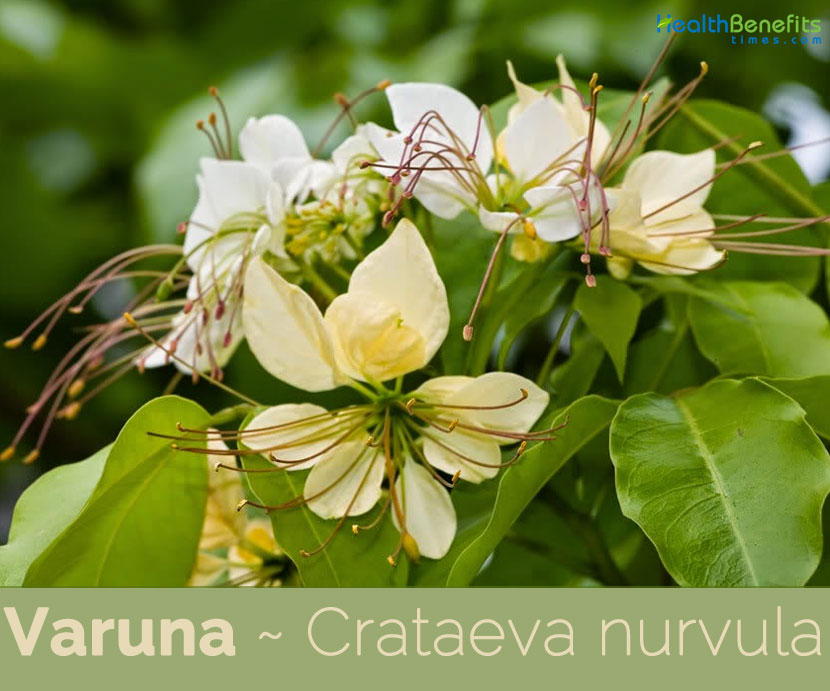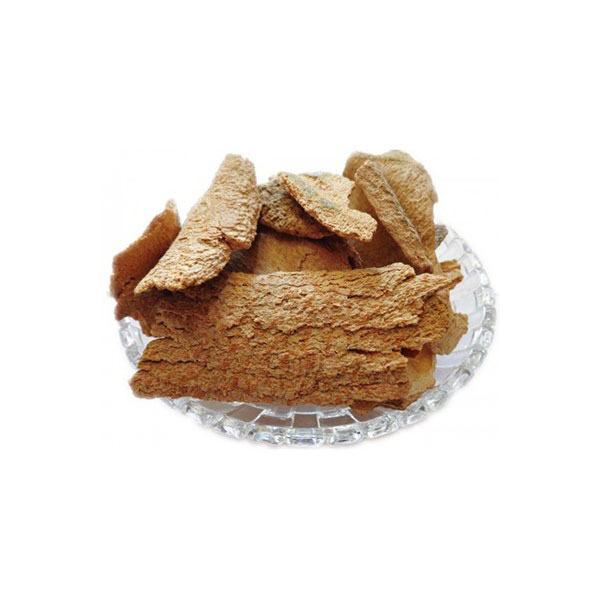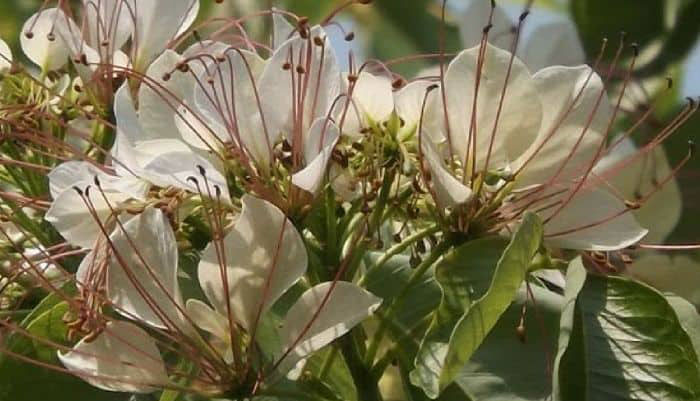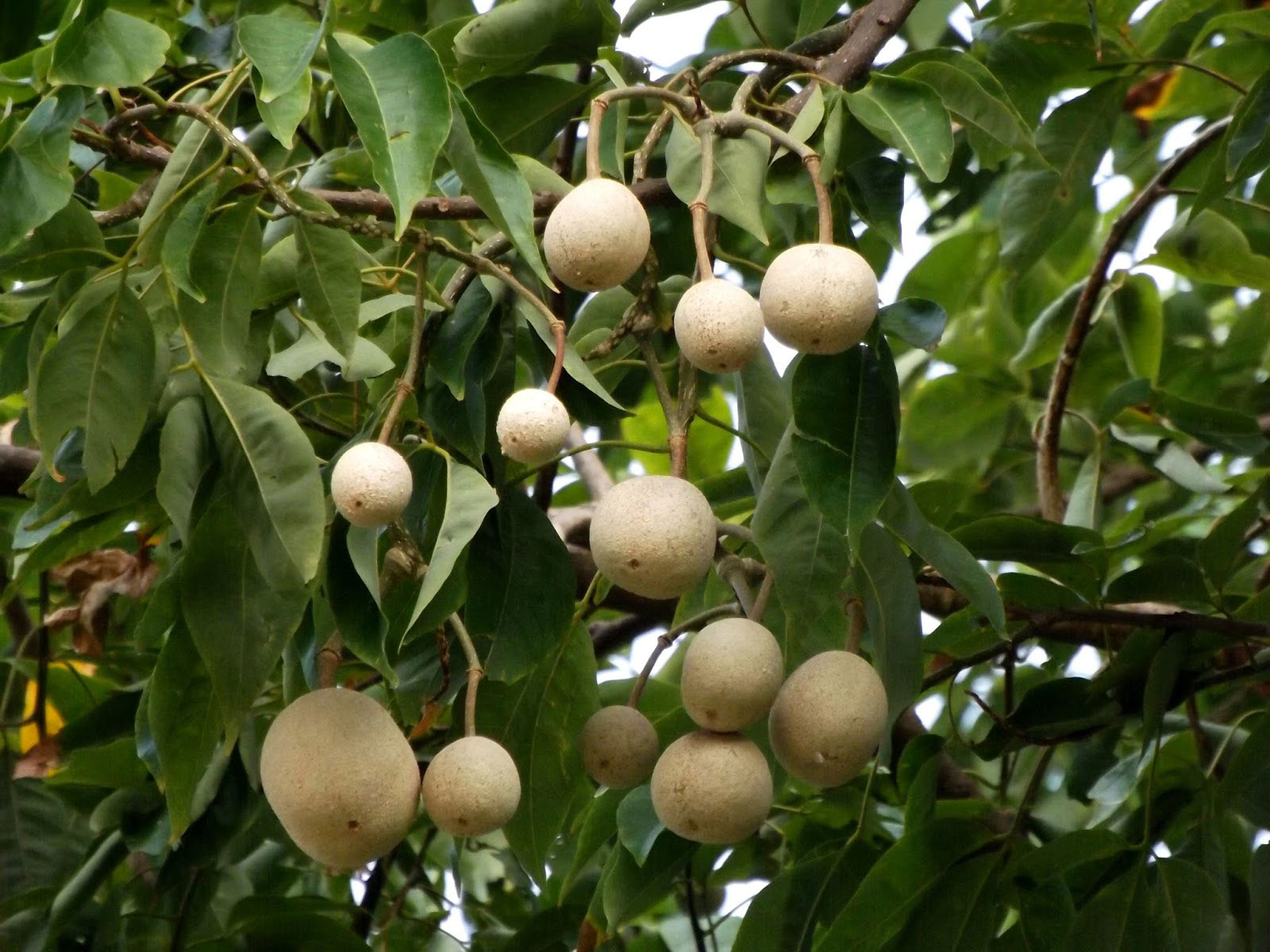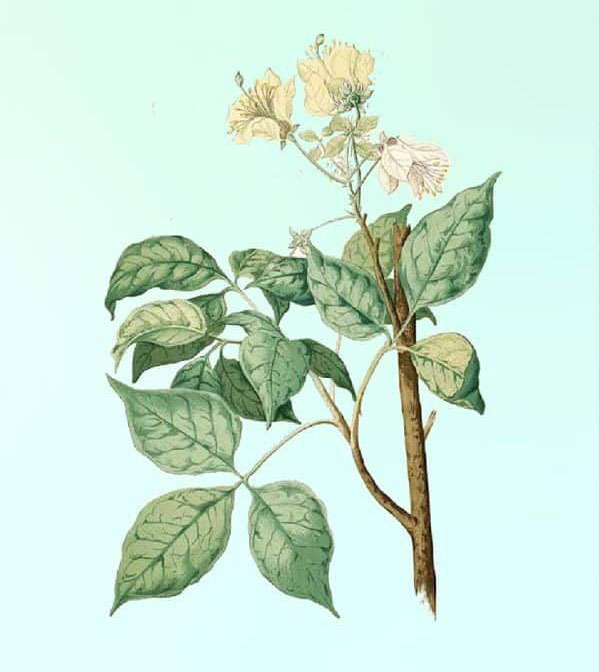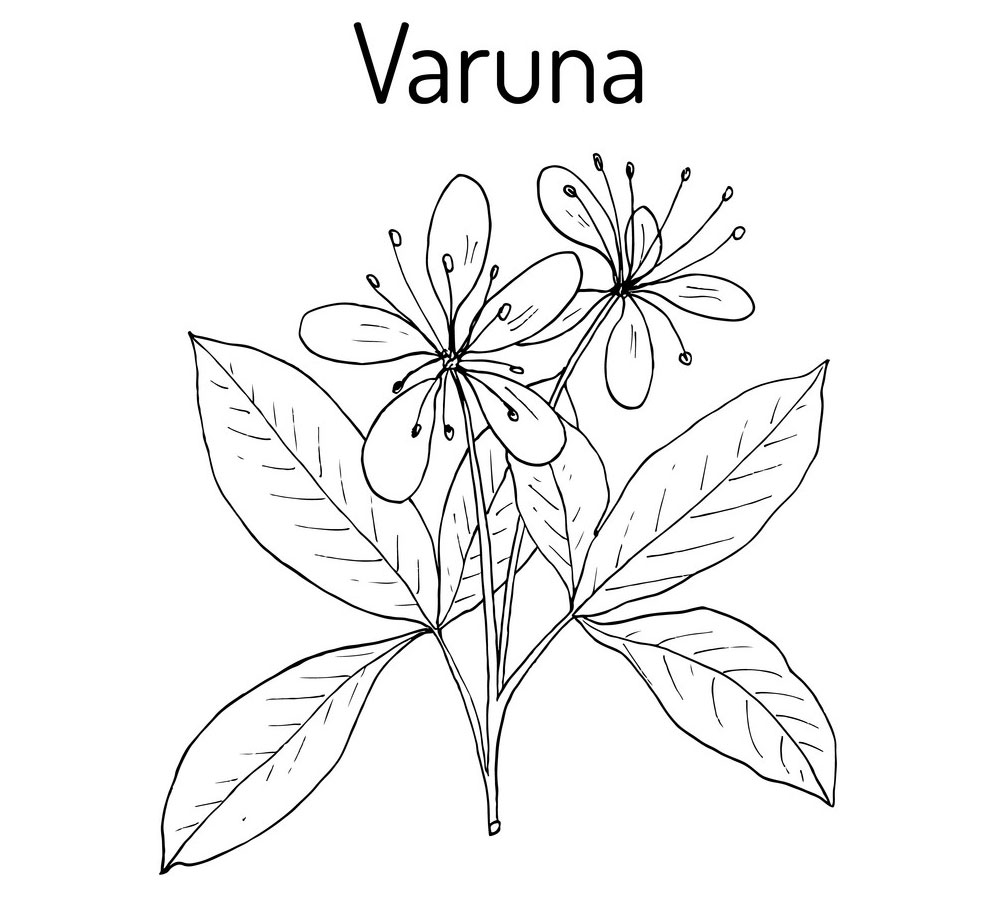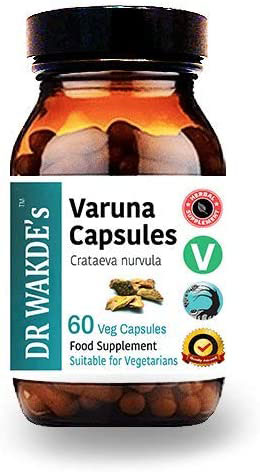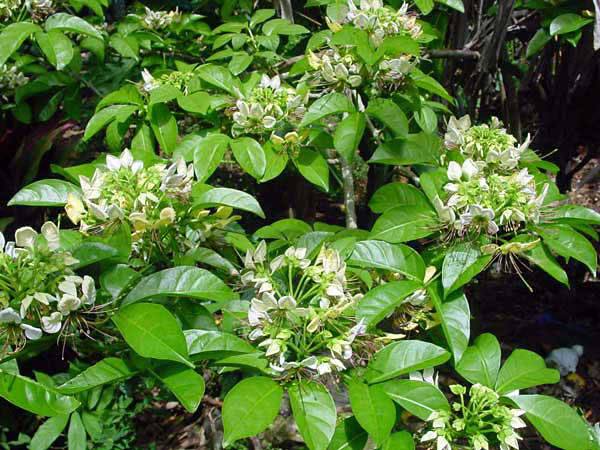Varuna Facts
| Varuna Quick Facts | |
|---|---|
| Name: | Varuna |
| Scientific Name: | Crataeva nurvula |
| Origin | India to Southeast Asia, south of China |
| Colors | Red colored after ripening |
| Shapes | Ovoid berries, 2.5 cm in diameter resembling a lemon |
| Flesh colors | Yellowish |
| Taste | Bitter, astringent, pungent, sweet |
| Health benefits | Renal stones, Painful urination, Kidney health, Liver disorders, Anti-inflammatory action, Eases Abdominal Pain, Reduces Fever, Improves Digestion, Natural Blood Purifier, Treats Worm Infestation, Cure Arthritis |
| Name | Varuna |
|---|---|
| Scientific Name | Crataeva nurvula |
| Native | India to Southeast Asia, south of China |
| Common Names | Three leaved caper, barun, baruna, crataeva, borun, holy garlic pear, scared lingam tree, triune, triune leaf tree, Lengam tree |
| Name in Other Languages | Bengali: Varne, Borun, barun tiktoshak Burmese: Kadat, kadet, katat Canarese: Bilpatri, bitusi, hoddelenge, mavilinga Central Provision: Bela, bel Coorg: Nerajane, nirajani, vettasi Depeha: Purbong English: Three-leaved caper, holy garlic pear, triune leaf tree, scared lingam tree, Lengam tree Gujarati: Varno, Vayavarno Hansot: Kagdakeri Hindi: Baruna, Barna, barun, bila Kannada: adhiraaja, Bilpatri, Bitusi, doddelanage, hoddelengae, Holenekki, Holethumbe, Maavilanga, Mata maavu, Naaram bele, Vitasi, Neervaala mara, Sethu bandhana, Vaayu varuna, Nervaala Kashmiri: Kath Konkani: Nervol Latin: Crataeva nurvala Malayalam: Nirmatalam, Nirval, Kili, Niravila, nirumaliyan Marathi: Bhatavarna, hadavarna, kawan, Haravarna, Karvan, Kumla, Nirvala, Ramala, Varun, Vaayuvarna Meehi: Bunboronda, tailadu Oriya: Barna Punjabi: Barna, Barnahi Sanskrit: Varun, Varana, Tiktshaak, Setu, Ashmarighna, Kumarak Siddha: Maavilingam Sinhala: Lunuwarana Tamil: Mavilingam, Narvala, Varanam, Maavilangam, Maralingam Telegu: Ulimidi, Bilvaram, Chinnavulimidi, Maagalingam, Maaredu, Peddamaagalingam, Peddavulimidi, Thellavulimidi. Unani: Baranaa Urdu: Barna |
| Plant Growth Habit | Moderate sized deciduous tree |
| Growing Climates | On glades, at the edge of a forest, near rivers and lakes, streams and riverbanks |
| Soil | Prefers a wet soil with a pH of 7, with abundant sunlight |
| Plant Size | About 50 ft. (15 m) high |
| Root | Long, cylindrical, root bark is 1.0 mm to 4.0 mm thick, outer surface yellowish brown, longitudinally wrinkled |
| Bark | Typically 6-15 cm long and 3-10 cm wide with a thickness varying from 5-15 mm. The outer surface of the bark is gray to grayish-brown and rough, due to the presence of several small and rounded lenticels. The inner surface is smooth and whitish-brown to buff colored |
| Branches | Branches have white patches tinged with purple and yellow |
| Leaf | Trifoliate, alternate and extipulate, about 8-12 cm long with oval or ovoid leaflets |
| Flowering season | March |
| Flower | White, greenish white, light yellowish or creamy colored and fragrant |
| Fruit Shape & Size | Ovoid berries, 2.5 cm in diameter resembling a lemon |
| Fruit Color | Red colored after ripening |
| Flesh Color | Yellow, fleshy pulp |
| Plant Parts Used | Stem bark, Root bark, Leaves, Fruits, Flowers |
| Seed | Embedded in the yellow, fleshy pulp of the fruits |
| Taste | Bitter, astringent, pungent, sweet |
| Available Forms | Poultice, tea or a tincture |
| Season | June |
| Health Benefits |
|
Plant Description
Varuna is a moderate sized deciduous tree that normally grows about 50 ft. (15 m) high. The plant is found growing on glades, at the edge of a forest, near rivers and lakes, streams and riverbanks. The plant prefers a wet soil with a pH of 7, with abundant sunlight. Roots are long, cylindrical; root bark is 1.0 mm to 4.0 mm thick, outer surface yellowish brown and longitudinally wrinkled. Bark is typically 6-15 cm long and 3-10 cm wide with a thickness varying from 5-15 mm. The outer surface of the bark is gray to grayish-brown and rough, due to the presence of several small and rounded lenticels. The inner surface is smooth and whitish-brown to buff colored. Branches have white patches tinged with purple and yellow.
Leaves are trifoliate, alternate and extipulate and are about 8-12 cm long with oval or ovoid leaflets. Flowers are white, greenish white, light yellowish or creamy colored and fragrant. Flowering normally takes place during March. Fertile flowers are followed by ovoid berries, 2.5 cm in diameter resembling a lemon and are red colored after ripening.
Varuna is stated in Vedic literature, its therapeutic use being known to ancient Ayurvedic physicians, particularly as a blood purifier, to maintain homeostasis. Dried bark is used as raw drug in traditional systems of medicine in India such as Ayurveda and Siddha.
Health benefits of Varuna
Listed below are some of the popular health benefits of Varuna
1. Renal stones
Varuna acts in an amazing way to resolve the problem of renal stones. It helps to restrict glycolate oxidase enzyme that cuts the extra production of oxalate. As this Oxalate is responsible for the formation of calculi.
2. Painful urination
Varuna helps to reduce the pain during urination, eases the flow of urine and even helps in reducing urine infection. Its effective compounds help in breaking down of kidney stones and removal of renal cysts. Bark of Varuna plant is used for the treatment of urinary tract infections.
3. Kidney health
It is quite good to remove the accumulated toxins like urea and creatinine from body. It is good herb to manage the kidney diseases.
4. Liver disorders
Varuna supports the good liver health. It helps to remove the waste materials from liver and thus maintains the healthy liver functions.
5. Anti-inflammatory action
Being packed with anti-inflammatory properties, it helps to reduce inflammation in rheumatoid arthritis.
6. Eases Abdominal Pain
Abdominal pain can be treated naturally with the use of Varuna. Abdominal swelling can be reduced with anti-inflammatory properties of this plant. It is even helpful in pain caused by spleen inflammation.
7. Reduces Fever
Leaves of this plant help in reducing fever and in reducing body pain due to its anti-pyretic properties. Migraines and headaches are also reduced with Varuna.
8. Improves Digestion
Varuna increases appetite and stimulates digestion. Digestive issues like bloating, gas, swelling and especially constipation can be relieved to a large extent with the use of this herb. It improves the functioning of liver with the promotion of bile discharge.
9. Natural Blood Purifier
Varuna has been used for its purifying properties. It detoxifies blood and also helps in removing toxins from the body.
10. Treats Worm Infestation
This herb has anthelmintic properties which help in reducing parasite worms. It is a wonderful way of expelling worms naturally from the body. It is good for persons who suffer from the regular problem of parasite worms.
11. Cure Arthritis
Due to the amazing anti-inflammatory properties, Varuna helps in reducing the swelling of joints. Rheumatic arthritis can also be treated with the use of this herbal plant.
Traditional uses and benefits of Varuna
- It is also found to be effective in treating urinary tract infections.
- Dried bark is used as raw drug in traditional systems of medicine in India such as Ayurveda and Siddha.
- It is used in urinary disorders, urinary calculi, blood disorders, worms and tumors.
- Bark of the tree is an important drug for problem affecting the kidneys and bladder.
- In Ayurveda, the bark has been traditionally used to heal kidney stones for more than 3,000 years.
- Externally, the paste or its leaves or skin of bark is applied in cervical adenitis, abscess and edematous wounds.
- The same paste is helpful in rheumatic joint for relief of pain.
- Pulp of leaves is applied on abdomen in spleen enlargement, with great benefit.
- Varuna when used internally is used in vast range of diseases.
- Decoction of leaves given along with ghee relieves flatulence and abdominal pain.
- It also works well as a laxative, cholegogue, appetizer and vermicide, hence useful in anorexia, tumors, liver disorders, flatulent dyspepsia and helminthiasis.
- Decoction of skin of varuna is given along with honey in abscesses for the potent anti-inflammatory action.
- Decoction of skin of varuna alone is used as blood purifier in gout, internal abscess and adenitis and to reduce body fats in obesity.
- Leaves cooked as vegetables are also generous in obesity.
- Decoction of leaves effectively alleviates the fever and associated delirium.
- Fresh juice of its leaves is useful as a bitter tonic.
- Bark is contraceptive and cytotoxic and is especially useful in urinary disorders, kidney bladder stones, fever, vomiting and gastric irritation.
- Root and bark are laxative and lithontripic and increase appetite and biliary secretion.
- Decoction of leaves is taken orally for curing gas, pain in abdomen, anorexia, tumors, the liver disorders, flatulent dyspepsia, helminthiasis and fever.
- Leaves intake in the form of juice or vegetable acts as tonic.
- Leaves promote wound healing, reduce stomach ache and provide pain relief.
- It stimulates digestion and elimination, therefore is helpful for those with low appetite.
- Varuna is a good choice for flatulence and abdominal pain.
- It has proven to be a good blood purifier.
- Traditionally, it has been effective in treating enlarge prostate and problems related to it. Lupeol is believed to bring down inflammation of the Prostate.
- Varuna is useful in dilating the superficial capillaries that stimulates circulation in an effective manner.
- It promotes the discharge of bile.
- It expels out worms both from intestine and liver, thus showing anthelmintic actions.
- It also decreases body’s temperature in fever condition.
- It also acts as a liver tonic and prevents the Liver from getting infected.
- Varuna also shows its efficacy in treating cervical adenitis and enlarge spleen.
- It also cures rheumatic joint pain and edematous wounds.
- It is considered to be a useful herb for anorexia, tumors and liver disorders and externally, varuna is used as a poultice for the treatment of cervical adenitis, abscess, enlarged spleen, rheumatic joint pain, and edematous wounds.
Ayurvedic Health benefits of Varuna
- Blood Purification: Boil three gram dried leaves of the tree in water, strain and drink.
- Boils: Apply the paste of leaves / bark.
- Bladder outlet obstruction, enlarged prostrate: The decoction of Varuna bark is prepared and taken twice a day.
- Calculi: Prepare a powder by mixing, Varuna (25 gram) + Gokhru (25 grams) + Giloy (10 grams) + Sarpunkha leaves (10 grams) + Kantakari (10 grams) + Shatavari (10 grams) + Sonth (10 grams). Take 5 grams of this powder with water, twice a day.
- Kidney diseases: Decoction of bark is effective in the treatment of diseases of the kidney.
- Renal/Ureteric Calculus: In kidney or urinary stones, the decoction of roots is taken in a dose of 30 ml twice a day.
- Swelling: Its leaves and skin of bark are ground with water and this paste is applied externally on inflammation of lymph nodes on neck, on pus, fluid filled wounds and rheumatic joints.
- Spleen enlargement: Externally leaves pulp is applied on abdomen.
- Throat swelling: Prepare a decoction by boiling Varuna Bark powder (5 gram) + Trikatu (1 gram) + Vibhitaki (3 gram) in 400 ml water till water reduces to 100 ml. Filter and drink twice a day.
- Tonsillitis: Decoction of Varuna bark is taken twice a day.
- Thyroid problems: Prepare a powder by mixing, Varuna Bark (4 gram) + Kachnar Bark (4 gram) + Bala leaves (3 gram) + Mulethi root (3 gram) + Sonth Dry ginger powder (2 gram) + Haritaki (2 gram) + Vibhitaki (2 gram). Take 5 grams of this powder with water, twice a day.
- Piles: Boil Varuna Bark (5 gram) + Triphala (3 gram), in water. Filter and drink.
- Prostate Enlargement: Take half teaspoon each of Tribulus Terrestris, Caesalpinia bonducella, Areca Catechu, Asparagus Recemosus, Crataeva Nurvala and Agate Gemstone Take them daily after meals for three months. OR Buy capsules containing all the above herbs. Take 1 tablet 2 times a day, daily after meals. OR Buy Mother – Tincture from a Homeopathic Shop of the above herbs. Start with 3 drops of each herb, if it suits then increases the dosage accordingly.
Precautions
- It may cause blisters in people with sensitive Skin.
- If you are taking medication for blood pressure, be careful. Seek medical advice before taking this herb, as it has a diuretic property.
- Avoid use during pregnancy.
References:
https://en.wikipedia.org/wiki/Crateva_nurvala
http://www.theplantlist.org/tpl1.1/record/kew-2742376


